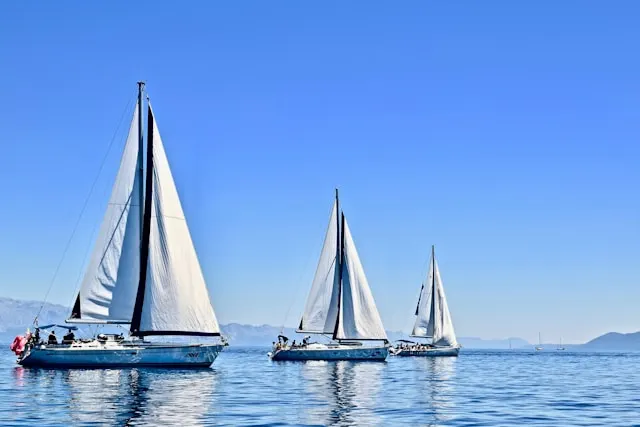Choosing the right sailing boat is like finding a new home on the water—it’s exciting but requires careful thought. Whether you dream of peaceful afternoons sailing across a lake or embarking on thrilling ocean adventures, selecting the perfect boat hinges on understanding your needs, budget, and the type of sailing you plan to do. This guide simplifies the process into clear steps to help you make an informed decision without feeling overwhelmed.
Table of Contents
Determine Your Sailing Goals
Before you start looking for a boat, think about what you want to use it for. Are you planning on short day trips, or are you dreaming of longer voyages? Maybe you’re interested in racing. Your goals will determine the type of sailing boat you need.
– Day Sailing: Small boats, often without a cabin, perfect for a few hours on the water.
– Cruising: Larger boats equipped with amenities for sleeping and cooking, ideal for longer trips.
– Racing: Boats designed for speed and performance on competitive sailing days.
Also read: Simple Ideas To Enhance Swimming Pool
Consider the Size
The size of the boat is crucial and depends on your intended use and the number of people who will typically sail with you. Larger boats offer more comfort and space but can be more challenging to handle and more expensive. Conversely, smaller boats are easier to manage, cheaper, and often more fun to sail but offer less space and comfort.
Also read: What to Expect From Car Accident Litigation
Budget Wisely
Sailing boats can vary significantly in price, and the initial cost is just the beginning. Consider these factors:
– Purchase Price: Depending on the make, model, and age, this can range from a few thousand to several million dollars.
– Maintenance Costs: Older boats may require more upkeep, and larger boats have higher maintenance expenses.
Also read: Types Of Golf Courses
– Operating Costs: Docking fees, insurance, fuel (if you have an engine), and other miscellaneous costs can add up.
Setting a realistic budget that includes these expenses will help you avoid financial stress.
New vs. Used
Deciding between a new or used boat is a significant choice:
– New Boats: They come with the latest technology and minimal wear, but they’re more expensive.
Also read: Top Ideas To Maintain Gym Equipments
– Used Boats: More affordable, but they might come with maintenance issues. Thorough inspection by a professional is crucial to ensure you’re getting a good deal.
Inspect the Boat Thoroughly
Whether new or used, a thorough inspection is essential:
– Structural Integrity: Check for signs of damage or repairs to the hull, deck, and keel.
– Sails and Rigging: Inspect the condition of the sails, mast, and ropes. These can be expensive to replace.
– Engine and Systems: If the boat has an engine, test it and look at other systems like plumbing and electricals.
Also read: How Can Maximise Solar Panel Performance
Consider the Design and Features
The design of the boat affects how it handles and what it’s capable of on the water:
– Hull Type: Monohulls are standard and offer a traditional sailing experience. Catamarans and trimarans provide stability and space but can be pricier.
– Keel Type: Fixed keels offer stability in rough waters, while lifting keels are good for shallow waters.
– Cabin Layout: Consider how much space you need below deck. This is particularly important for cruisers.
Also read: How To Avoid Expensive Payroll Errors
Test Sail
Just like test-driving a car, a test sail is crucial. This experience can tell you a lot about how the boat handles and if it feels right for you. Pay attention to how it feels in different sailing conditions and how easy it is to maneuver.
Research and Seek Advice
Talk to other sailors and join local sailing clubs or online forums to get insights and advice. Experienced sailors can offer invaluable information about different types of boats and what to look for during the buying process.
Also read: Tips To Get Booth At Expo
Consider Resale Value
Some boats hold their value better than others. Research the brands and models that have good resale value in case you decide to sell in the future.
Legal and Documentation
Make sure the boat has a clear title, and all the necessary documentation is in order. This includes registration, insurance, and any other required permits or certifications.
Also read: Benefits Of Workforce Management
Conclusion:
Selecting the ideal sailing boat is a journey that combines practicality with dreams. By considering your sailing ambitions, budget constraints, and the boat’s features, you can make a choice that not only satisfies your adventure spirit but also fits your lifestyle. Remember, the perfect boat is out there waiting for you; it just takes a little research and patience to find it and set sail on countless memorable voyages. Check more articles on Nomadic Goals.

